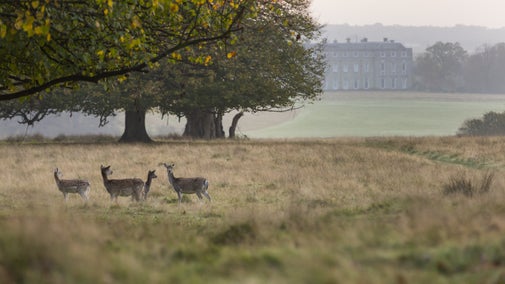Estate walk at Sheffield Park
Sussex
Complement a visit to the stunning landscape gardens with an exploration of the historic parkland at Sheffield Park, East Sussex. Gentle slopes across grazed fields lead you by copses and down to the riverside flood meadow.
Near to
Sheffield Park and GardenStart point
Sheffield Park car park, TN22 3QXTrail information
More near here
Petworth ancient trees walk
Discover more about the ancient trees that dominate the skyline of Petworth on this circular walk in Sussex.

Birling Gap walk from the Tiger Inn
This circular walk allows you to enjoy great views over the downs and Easy Sussex coast and feel a sense of the landscape's long history.

Ditchling Beacon to Devil's Dyke, South Downs walk
This route will take you through some of the most stunning parts of the South Downs Way, where you will find wildlife aplenty and see extensive views from the Ditchling Beacon.

East Head and Ellanore circular walk
This circular walk takes in East Head, Chichester harbour and West Wittering village. Pretty coastal paths and pub pit stops await.

Get in touch
Our partners

We’ve partnered with Cotswold Outdoor to help everyone make the most of their time outdoors in the places we care for.
You might also be interested in
Eating and shopping at Sheffield Park and Garden
Browse in the shop and Plant Shop, or stop by one of the indoor and takeaway eateries for a well-deserved rest, when you visit Sheffield Park and Garden.

Walking in Sussex
Explore coastal paths, open parkland and countryside teeming with wildlife on these top walks in Sussex.

Cotswold Outdoor: our exclusive walking partner
Learn about the National Trust’s ongoing partnership with Cotswold Outdoor. Find out how they help us care for precious places and the exclusive discount available for National Trust supporters.

Follow the Countryside Code
Help to look after National Trust places by observing a few simple guidelines during your visit and following the Countryside Code.

Staying safe at National Trust places
The special places in National Trust care sometimes come with a few risks for visitors, be it coastline or countryside. Find out how to keep safe throughout your visits.

Walking
Explore some of the finest landscapes in our care on coastal paths, accessible trails, woodland walks and everything in between. Find the best places to walk near you.



